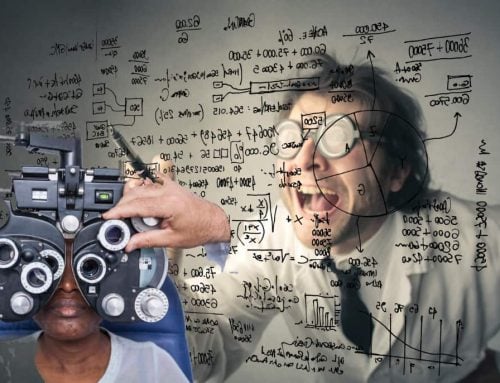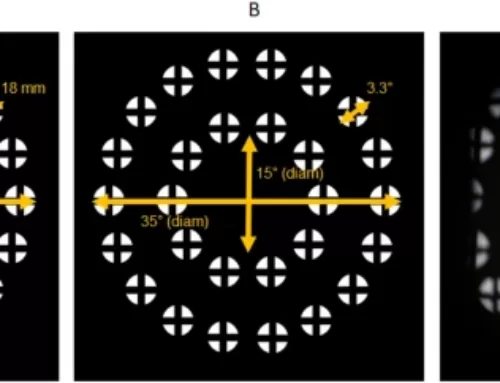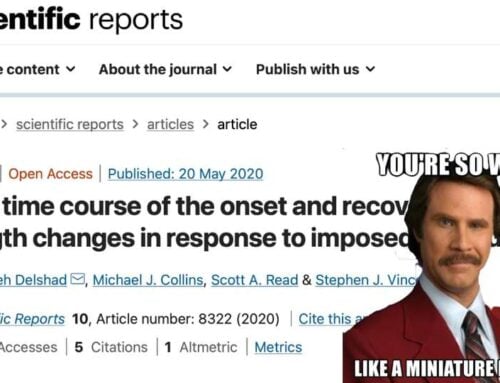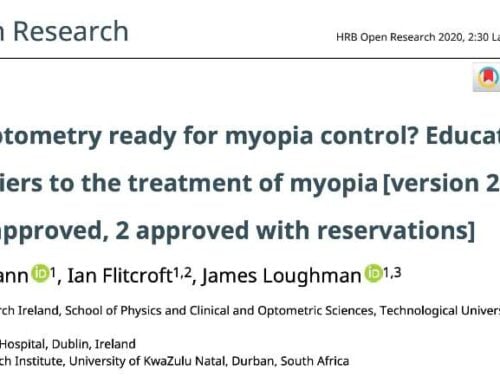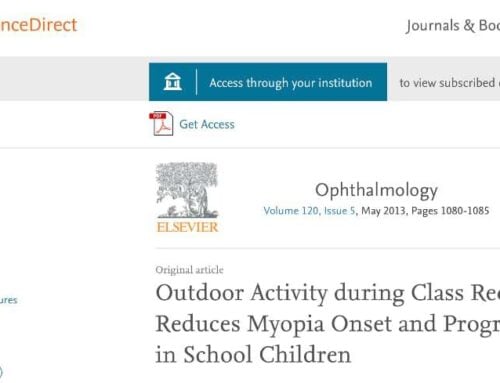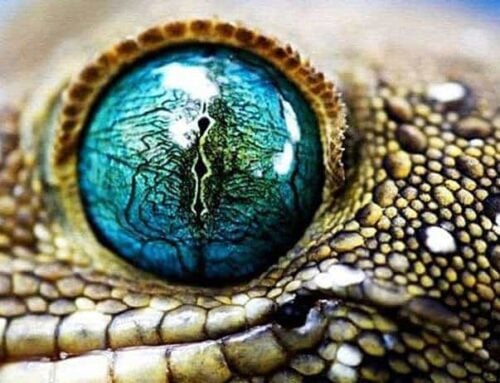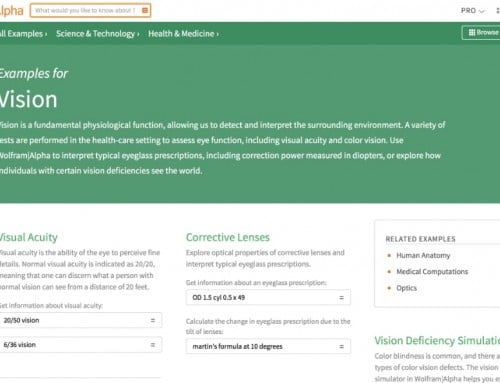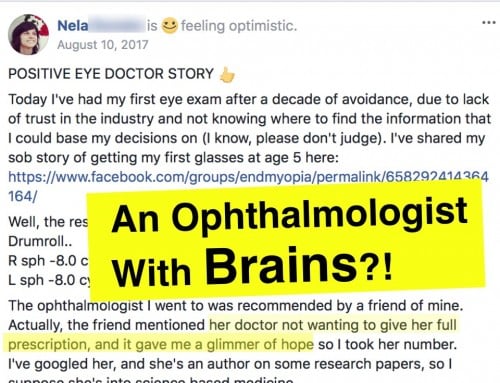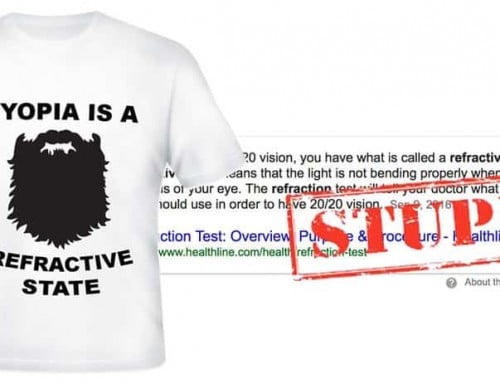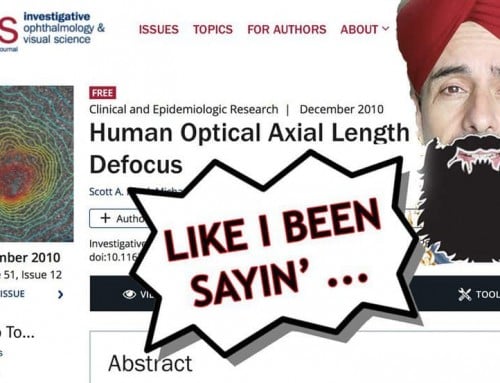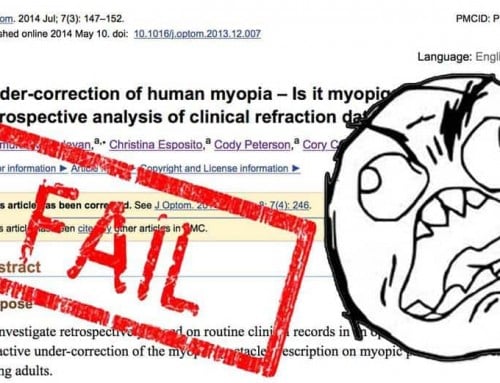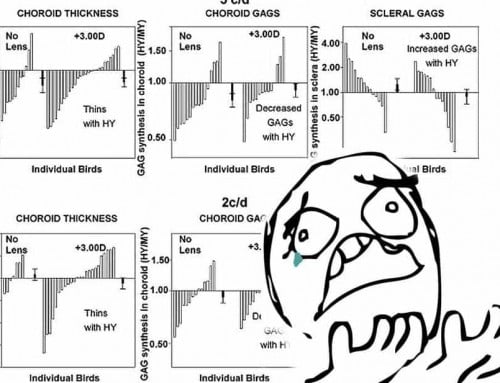Here’s a great analysis from Jonathan over in our Le Meow forum – of how and why your eyesight seems worse according to lighting conditions:
Hi, my name is Jonathan, and I’ve been a lurker here for a while. I’m currently at about -3.6 diopters in both eyes down from around -4.75 (20-20 measurement). This is actually my second go at this, about 15 years ago I tried something similar, discovered what we now call “Active Focus”, got some good initial gains then slowed down. At the time I didn’t understand how long it takes for real change (thanks for the head’s up, Jake), so I gave up, except for using what you call differentials for close-up work (mostly to eliminate eye strain). This time I plan to get to astronomy-perfect, which is pinpoint stars naked eye with a fully dilated pupil (probably +0.25 to +0.5 finaly eye state).
What I wanted to talk about today is why (IMO) our vision gets so much “worse” at dusk outside on an overcast day. I’m sure you’ve experienced it, during midday when the sun is bright, everything is sharp and clear with slightly under-prescribed lenses,. But at dusk outside (especially with overcast skies), it seems like things are really blurry, and if you’re like me, you worry that you’ve lost your recent gains. Well it turns out, IMO, you’re eyes didn’t change, nor is it a sign of eye fatigue. It’s simple optics.
With regards to simple optics, the eye’s lens is a simple lens. This means it bends light at different amounts. In my case, staring at a bright blue light, my eyes are about 0.75D worse than with a red light. My wife recently picked up some used blue-light LED clocks, and they’re horrible to look at, I have to be about 2’ away to see them sharp with my normal distance glasses! My point is, the color of the light determines how “well” you see.
The relevance of this has to do with ambient color tint. During daytime, the color temperature (according to camera-o-philes) is around 5500k in temperature, or a nice yellowish tint. At dusk in overcast, it’s actually really quite blue, in the 7500k-8500k range. Inside at night with warm lamps, it’s reddish, at 2500k-3000k. What does this mean? Well, a generally blue scene will appear more blurry than a red or yellow-tinted scene! So that’s factor #1 as to why dusk outside is often more blurry than daytime. And that’s why when you go inside to a reddish (warm) lit environment your eyes get “better”.
The second factor is pupil size and depth of field. If you shoot photos with a large-sensor camera (e.g. DSLR), you likely know about depth of field. Depth of field, for a given focus distance, is how close and far from that distance things still appear sharp. Well, the larger the aperture, the narrower the depth of field. For example, an F/1.4 lens at F/1.4 has a very narrow depth of field (yielding nice blurry backgrounds when photographing someone’s face). At F/8, the much smaller opening causes the depth of field to be quite large. The eye’s pupil works the same way, when it’s small (daylight), the depth of field is large. When it’s large (dusk, night), the depth of field is much smaller. And when your eye can’t (yet) focus all the way to its target, blur gets worse as the depth of field is smaller. Thus at dusk, the large eye pupilmakes for a smaller depth of field = more blur. This is also why the “correct” prescription doesn’t have this problem, as you have your narrower depth of field still, but it’s centered on the object.
The final factor is another concept from photography. Some camera lenses have what’s called “focus shift”. What this means is, that certain lenses when focused at one distance, have the focus point actually shift as the aperture is opened and closed. Many fast lenses (e.g. F/1.4) have this issue. Basically, when wide open, the focus point is typically closer than when stopped down. Our eye, being so simple, likely does the same thing. When our pupil is wide open, the focus point shifts towards you, making you more myopic. Thus the third reason why you see more blur at dusk.
Finally, what happens when you go inside to a reddish warm lit environment? Well, the first factor changes and helps your view. Thus you can see better (slightly) inside than outside at dusk.
So there you have it, Jonathan’s crazy ideas on why we see so much worse outside at dusk/night/ Your eyes didn’t change, nor are your eyes “tired”. It’s simple optics.
Oh, a final note, this is why when measuring, you need the same brightness and color tint. Otherwise you will get distance variations that have nothing to do with how your eye id doing!
This is an excellent summary.
Some additional debate may be had on light spectrum in particular, discussing photoreceptors on your retina, and even the use of light spectrum difference to potentially affect axial length change of the eye.
I’ve been considering having some of the gurus on this topic on for a chat, if you enjoy further deep dives into vision biology. Above, just for general edification for the question that often comes up, regarding vision in low light or specific type of lighting conditions.
Hopefully this was useful!
Cheers,
-Jake


